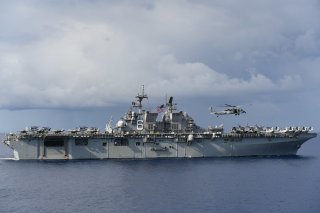How Imperial Japan Gave the U.S. Navy a Rude Awakening at Coral Sea
In the first five months of the Pacific War, the Imperial Japanese military won an almost uninterrupted string of victories, seizing Burma, Indonesia, the Philippines, Singapore, and most of the Solomon Islands and New Guinea.
However, the seemingly inconclusive battle was a turning point for the Allies. Australia and its foothold in New Guinea remained secure, forcing Japanese forces to commit to a costly and ultimately unsuccessful ground campaign on the latter island. Meanwhile, the damaged Shokaku could not participate in the Battle of Midway, an even larger carrier battle that brought an end to Japan’s advances in the Pacific War.
America’s first fleet carrier had fallen fighting precisely the kind of battle it had spent over a decade developing tactics for. Just a year later, a new Essex-class carrier was christened USS Lexington (CV-16), and would remain in U.S. Navy service until 1991.
Sébastien Roblin holds a Master’s Degree in Conflict Resolution from Georgetown University and served as a university instructor for the Peace Corps in China. He has also worked in education, editing, and refugee resettlement in France and the United States. He currently writes on security and military history for War Is Boring. This article is being republished due to reader interest.
Image: Flickr.

